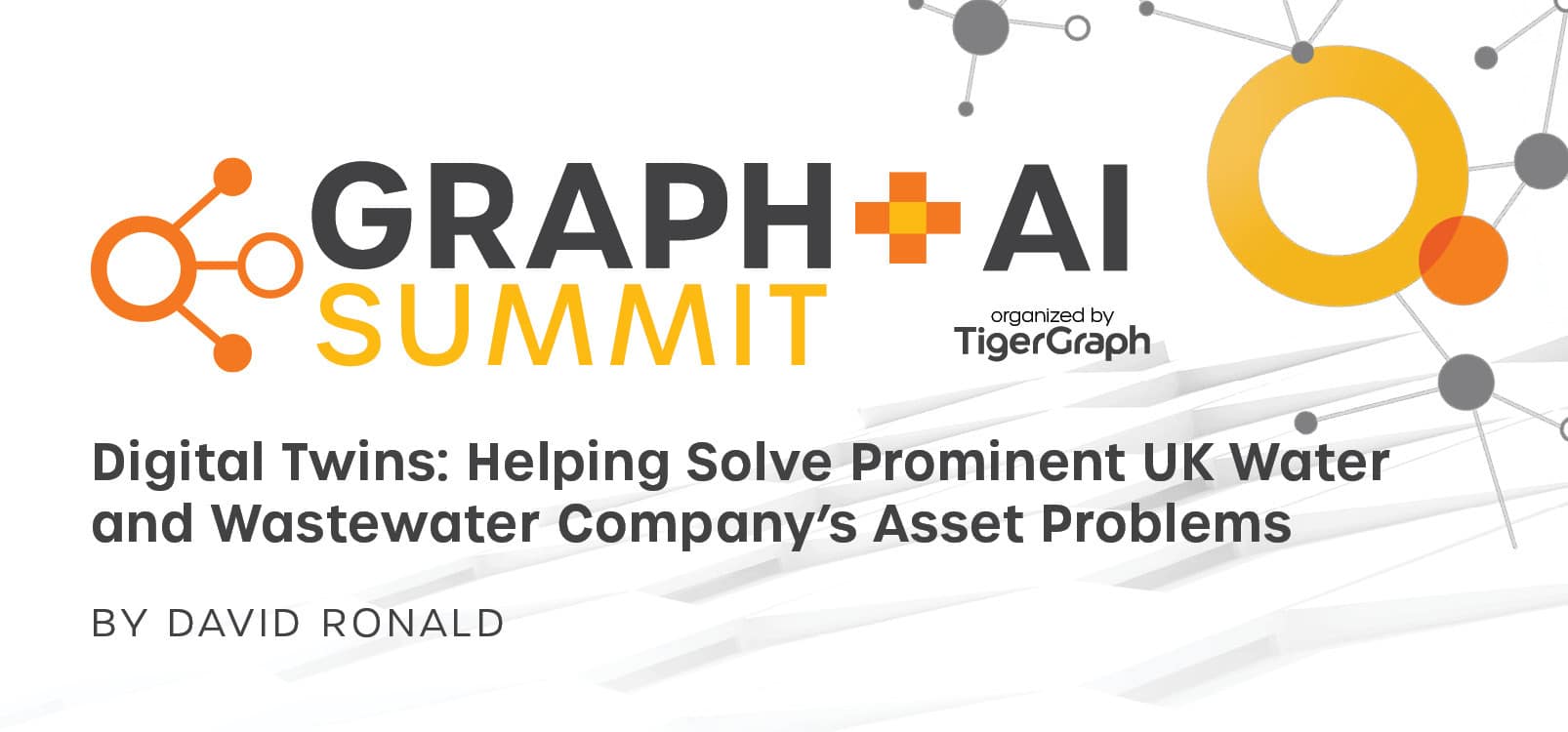Digital Twins: Helping Solve Prominent UK Water and Wastewater Company’s Asset Problems
- Blog >
- Digital Twins: Helping Solve Prominent UK Water and Wastewater Company’s Asset Problems

An ability to manage assets, such as potable water pipelines, wastewater pipelines, and pumping stations, is an essential part of running a water utility.
Thames Water is responsible for the public water supply and wastewater treatment that covers London and parts of the southeast of England. In 2016, the utility suffered eight major pipeline bursts, which resulted in customer disruption and damage to property; in 2018, extreme weather conditions caused the same problems, and much more. Consequently, the utility decided to invest in technologies that would enable it to better predict failure.
During their recent Graph + AI Summit presentation, Digital Twins: Helping Solve Prominent UK Water and Wastewater Company’s Asset Problems, Jethro Yates, Lead Data Scientist, and Edward Perry, Data Scientist, shared their insights into the role of digital twins in addressing Thames Water’s asset management problems.
Better Understanding Using Digital Twins
Thames Water is a regulated utility with specific performance commitments to a government oversight board that it has to meet. The utility missed those targets over a period of years, including in 2016 and 2018.
“We were asking ourselves at this time, how can we better predict failure, how can we operate differently to how we’re operating today…and can we forecast demand in real-time,” according to Jethro Yates, “We were motivated us to invest in our data platform and, in particular, digital twin and graph technology.”
“Digital twin” is somewhat a buzzword in the industry and, while it has a good definition, it has a somewhat vague meaning. We can all agree, however, that the value behind a digital twin is what you do with it rather than just what it is.
Thames Water has over 30,000 kilometers of clean water pipes and over 100,000 kilometers of wastewater pipes, with quite a lot of commonality between them—for example, both types of pipe are buried underground and they share connectivity with each other—but they have different problems dealing with their different uses and different use cases.
The utility took an innovative approach to building a digital model of its network. Instead of developing a single digital twin of its assets, it built an ecosystem of twins.
“Instead of just developing a single digital twin, we are developing twins based on use cases, ” said Ed Perry. “By developing it as an ecosystem, these twins can develop independently, and can build to solve the exact problems which they’ve got at the moment, without being limited by what’s happening elsewhere in the network.”
At present Thames Water has two digital twins, one for its network of potable water, and another for its network of sewage water. The utility is exploring other twins, the first of which is based on the hundreds of treatment works it has. And those are not just driven by the connectivity or the assets—quite a lot of value is driven by the physical processes that are happening based on engineering models that have been used in the industry for many years.
The Synergy Between Digital Twins and Graph
Thames Water is using a graph network as the foundation for its ecosystem of digital twins. Assets that are buried underground, such as pipes, are represented as edges in the graph, while point assets above ground, such as pumps or valves, are represented as vertices.
The graph provides the utility with an ability to see how potable water flows through the network and how sewage flows through the network. It enables the utility to obtain a deeper understanding of its network by providing the ability to better analyze the data it collects, to be more informed about maintenance issues, and to run “what if scenarios” that can help predict failures.
In the past, Thames Water had attempted to achieve this capability with a relational database. However, “It becomes immediately more tangible to people when you see that being visualized, rather than trying to just look at a relational database,” according to Ed.
You can learn more about Jethro and Ed’s application of digital twins to solving Thames Water’s asset management problems by watching the full Graph + AI Summit session.












